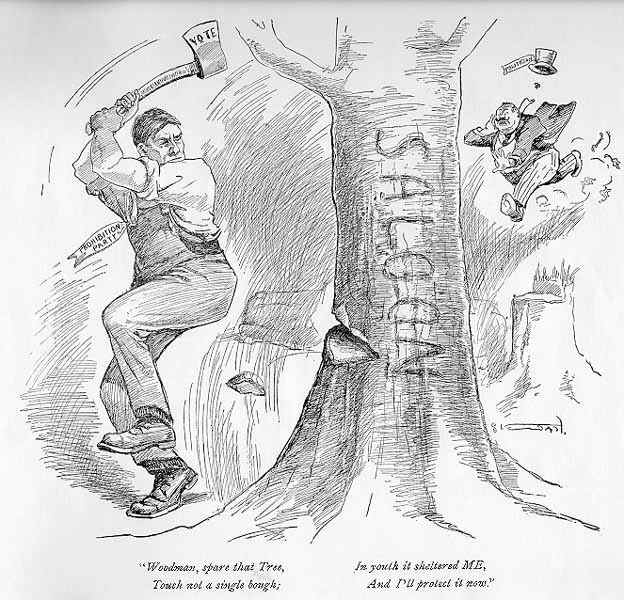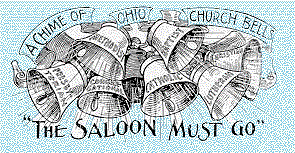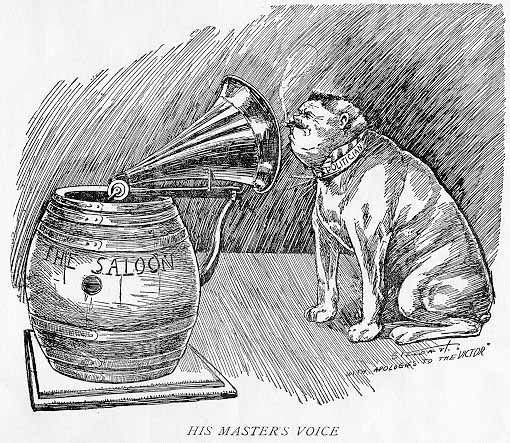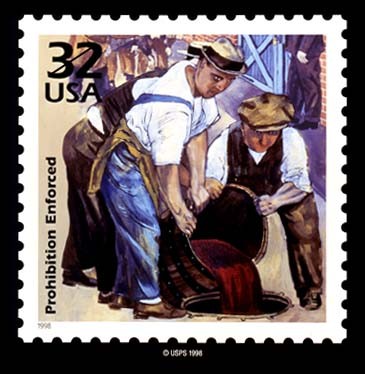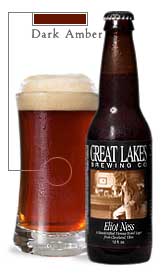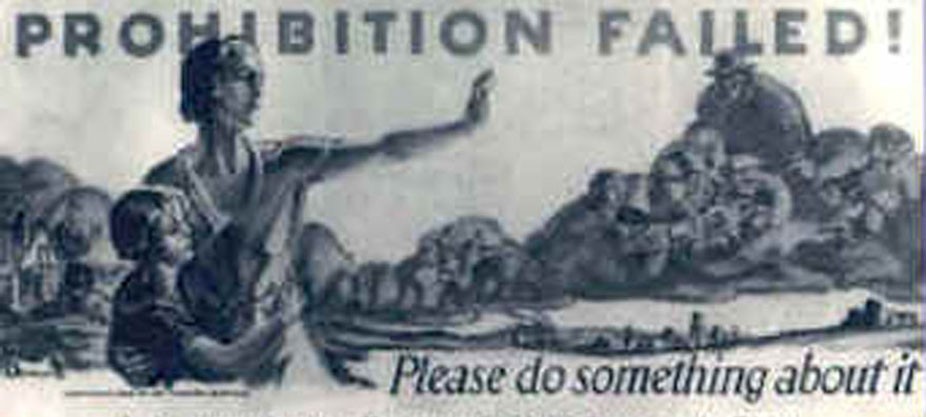 |
|
The illegalization of alcohol (consumption and manufacture) was passed into law at a national level in 1919 and enacted in 1920. Often historians regard Prohibition as the culmination, perhaps the over-extension, of the efforts at social change which thrived during the era. Indeed, because of the many important social policies determined, the period of American history from 1865 until 1920 is often called the "Progressive Era." During the period, unions expanded greatly, a number of basic labor rights were secured, including a minimum working age, and women gained the right to vote with the Nineteenth Amendment (1920). Ironically, at the same time that America was pushing forward its own social policy with a number of progressive, forward-looking policies, the first Red Scare ended up in the jailing of tens of thousands of innocent people. The government played an official hand in the chaos, coordinating raids across the country.
One of the most outspoken rivals of Prohibition was Percy Andreae, who organized a saloon-backed campaign against the illegalization of liquor. Andreae reveals the connection between religious interests and the political motivations of the Prohibitionists, demanding that the Prohibition movement was largely the result of religious forces attaching themselves to a policy fad to spread their ideals. He writes: "Prohibition is
merely the title of the movement. Its real purpose is of a religious,
sectarian character, and this applies not only to the movement in
America, but to the same movement in England, a fact which, strangely
enough, has rarely, if at all, been recognized by those who have
dealt with the question in the public press. If there is any one who doubts the truth of this statement, let me put this to him: How many Roman Catholics are prohibitionists? How many Jews, the most temperate race on earth, are to be found in the ranks of prohibition? Or Lutherans? Or German Protestants generally? What is the proportion of Episcopalians to that of Methodists, Baptists and Presbyterians, and the like, in the active prohibition army? The answer to these questions will, I venture to say, prove conclusively the assertion that the fight for prohibition is synonymous with the fight of a certain religious sect, or group of religious sects, for the supremacy of its ideas. In England it is the Nonconformists, which is in that country the generic name for the same sects, who are fighting the fight, and the suppression of liquor there is no more the ultimate end they have in view than it is here in America. It is the fads and restrictions that are part and parcel of their lugubrious notion of Godworship which they eventually hope to impose upon the rest of humanity; a Sunday without a smile, no games, no recreation, no pleasures, no music, card-playing tabooed, dancing anathematized, the beauties of art decried as impure-in short, this world reduced to a barren, forbidding wilderness in which we, its inhabitants, are to pass our time contemplating the joys of the next. Rather problematical joys, by the way, if we are to suppose we shall worship God in the next world in the same somber way as we are called upon by these worthies to do in this" (Andreae, 10).
Prohibition did create a huge drop-off in consumption in its first few years (see this external website for a graph on alcohol consumption), despite claims that it was the "most alcoholic period in American history" (Allsop, 25). However, very quickly after this drop, as we can see, the amount of consumption began to rise. The rise was likely caused by the proliferation of illegal ("bootlegged") alcohol. Bootlegging, interestingly, began before Prohibition, and actually continued after it, as a means of bypassing high taxes on alcohol. Without tax, bootleg liquor was sold much cheaper than legal alcohol. By 1930, bootlegging was much more efficiently organized, thanks to criminals who turned the operations into a full-fledged illicit industry. By that year, it was estimated that 10,000 speakeasies were operating (Allsop, 33). In Chicago, hundreds of bars that were supposed to close simply stayed open after Prohibition became law. There were innumerable "blind pigs," bars and saloons with blank fronts (unmarked with any indication of their function), through which one entered a side door, often fitted with a peep hole(Allsop, 28). A gentleman's magazine at the time featured an article on bootlegging, and had this to say, "The sale of dissipation is not only a great business; it is among the few greatest businesses of Chicago. The leading branch of it ... is the sale of alcoholic liquor.... The liquor interests are vastly more extended in Chicago that any other [city]. There are 7,300 licensed liquor sellers in Chicago, and in addition about a thousand places where liquor is sold illegally. The only business which approaches it in number of establishments ... is the grocery trade, which has about 5,200. The city spends at least half as much for what it drinks as for what it eats..." (Turner, 576).
Ultimately, it was largely
the harsh enforcement of Prohibition which led many to ultimately
reject it - the defenders of the movement seem to have become far
too fervent in their dedication. For example, in 1928 Fred Palm
of Lansing, Michigan was given life imprisonment for possessing
a pint of gin; in 1929 an Aurora, Illinois housewife was killed
and her husband clubbed by a deputy sheriff searching for liquor;
in 1928, an innocent insurance agent was killed during a Chicago
raid (Allsop, 36). Another example of the extremity of enforcement
is provided (ironically) through the brother of Al Capone, "Three
Gun" Hart. Nine days after his election, Roosevelt asked
Congress to amend the Volstead Act to permit brewing and sale of
beverages up to 3.2% alcohol. In February, 1933 resolutions to repeal
the amendment were passed and Prohibition came to an end.
|
